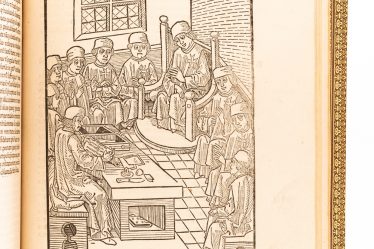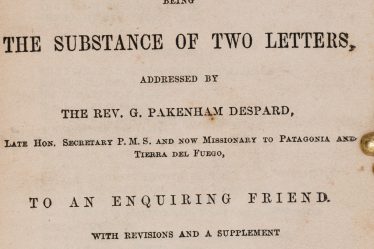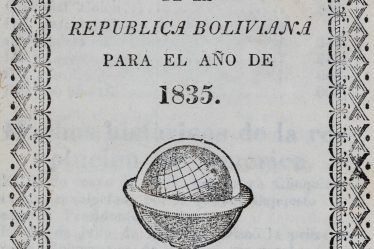The ´Floresta de varia poesia. Contiene esta Floresta que componia el Doctor Diego Rodriguez Pagan, muchas y diversas obras, morales, spirituales, y temporales y esta primera es una elegia en la muerte del Emperador nuestro rey y señor´ was written by Diego Ramirez Pagan, and the copy web ring to you is the first edition, printed in 1542 in Valencia by Joa Navarro. It is one of rarest works of Castilian poetry of the 16th century, and a remarkable, beautiful printing.
The book is copiously illustrated with woodcuts in text, title with arms of the Prince of Melito, a portrait of the author, and a series of nine woodcuts of a rather naïve and attractive nature illustrating the text, combining poetry and mystical literature
Ramirez Pagan (c.1524 – 1562) was a Spanish poet and priest, chaplain of the Dukes of Segorbe; he studied at the University of Alcala, where he won a prize. His masterpiece, undoubtedly this work, was a transition work between the generation of Boscan and Garcilaso, and that of Fray Luis de Leon and San Juan de la Cruz.
Salvá notes that ‘En concepto de D.J.B Gallardo, este libro es uno de los más raros que existen en la literatura poética española’. It was so rare, Salvá continues, that ‘Mr. Heber no lo tuvo en su Biblioteca, ni Brunet consiguió verlo, Cerdá y Rico sólo descubrió un ejemplar, según dice en sus Adiciones a las notas de Diana de Gil Polo’.
Apart from Ramirez Pagan, as Salvá notes, the books contains compositions by ‘D Fadrique de Toledo, Alonso García, Juan Lezcano, Felipe Catalán, Antonio de Padilla, D. Juan Hurtado de Mendoza, Jorge Montemayor, D. Sancho de Londoño, D. Manuel Ferrando y Pedro Hurtado de Guevara’.
It also contains five sonnets by a woman poet, which was very unusual in the 16th Century. She wrote under the pastoral pen name of la Marfira, and established an amorous dialogue with Ramírez Pagan who addressed himself to la Marfira under the pastoral name of Dardenio. It also contains a poem by another woman, Isabel de Vega.
It was unusual by that time, that someone would publish a gathering of his own poems and publish them on his own.
“En el recopila la poesía de juventud y la de la madurez adquirida al paso de los años, que le permite ser recordado como poeta de transición y no desdeñable puente entre la primera generación de liricos del siglo XVI, encabezada por Boscan y Garcilaso, y la ultima (Herrera, Fray Luis de León, San Juan de la Cruz, etc.). ” (David Lopez Garcia, Otroso sonetos de Diego Ramirez Pagan).
References: Palau, 247148; Gallardo, 3573; Salvá, 339; Heredia, 1655.



